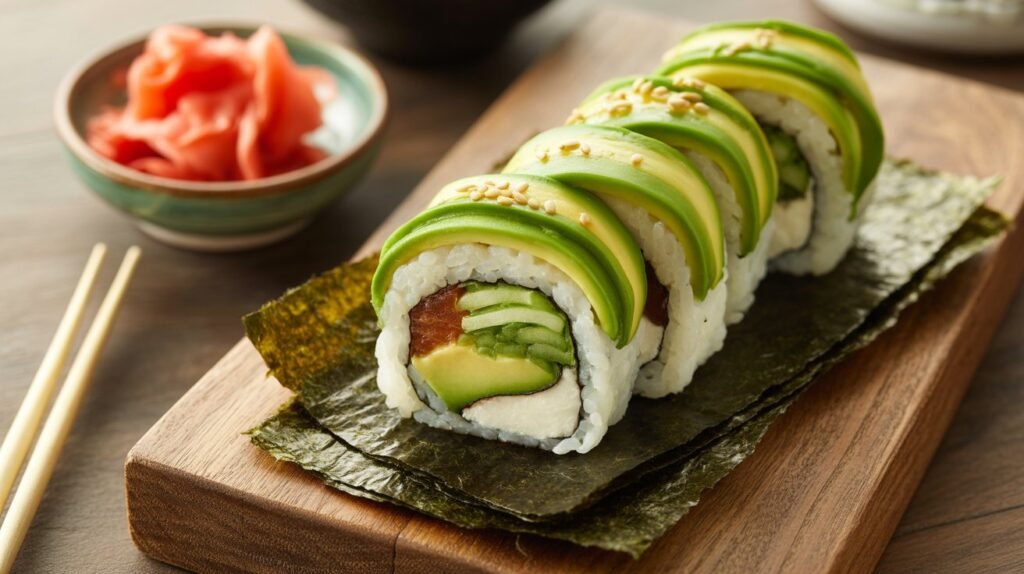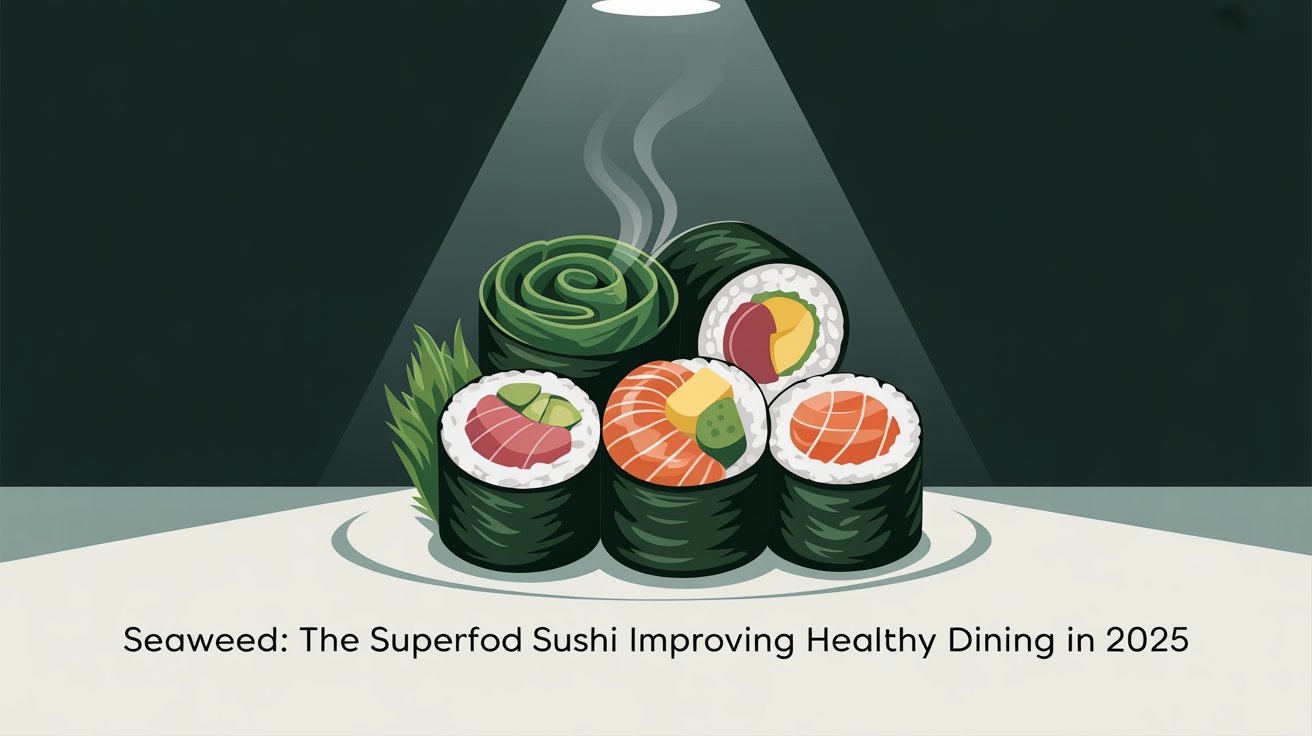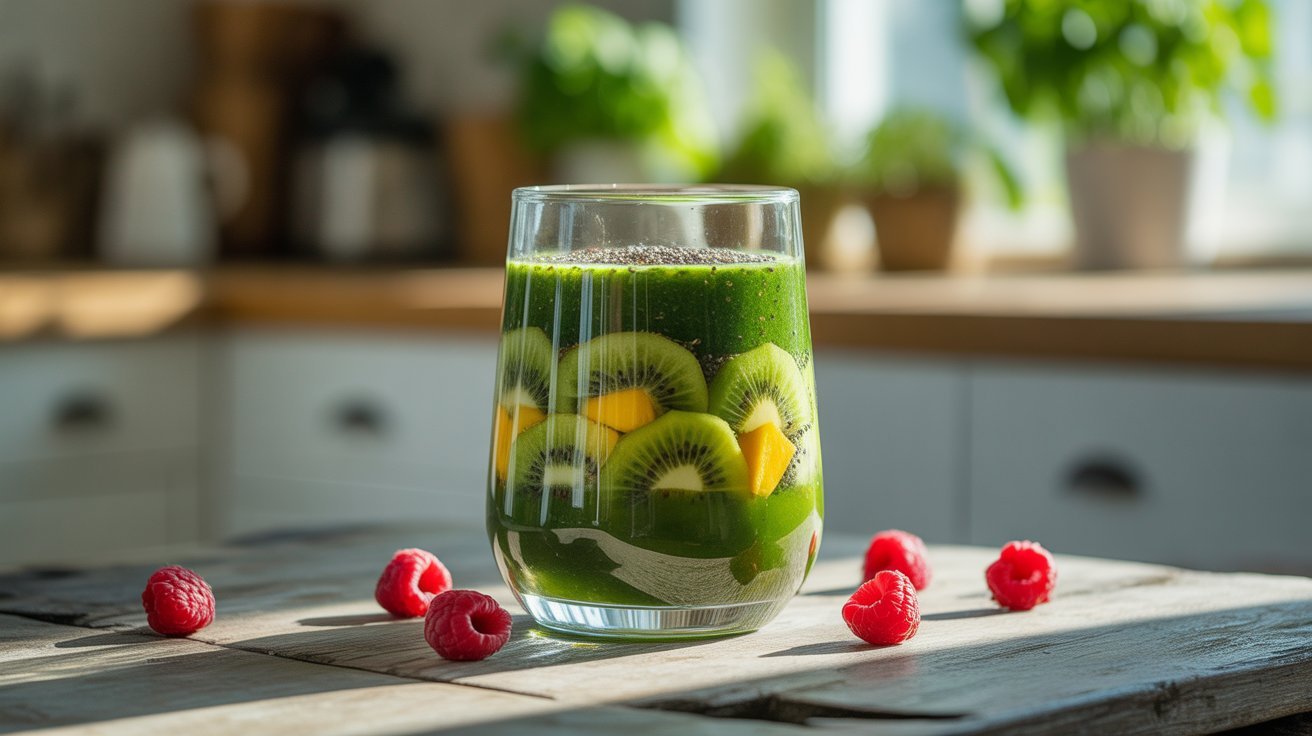Sushi has always retained the ideas of balance and freshness, but these days, things are quite different. Rather than sticking to the all-too-common fish rolls, a majority of people are opting for a more plant-based sushi that is lighter, healthier, and better for the planet. Seaweed, which used to be the sushi shroud, is now coming into the limelight. Avoiding fish altogether and replacing it with this ocean superfood allows sushi to transform into a more healthy and environmentally friendly dish, all this without compromising on taste or excitement.
A Fresh Take on Sushi: Rooted in the Ocean’s Bounty
Seaweed is probably something you are seen wrapped around sushi, but what is it? A range of edible marine algae are referred to as seaweed. These ocean plants, which grow naturally along oceans, transforming each strand into a nutrient dense powerhouse by absorbing sunshine and minerals.
There are three primary kinds that you should be aware of:
- Brown seaweed: such as wakame or kombu, is frequently used in soups and broths because it provides minerals and iodine.
- Red seaweed: Because of its savory flavor and simplicity of preparation, red seaweed, like nori and dulse, is frequently used in sushi wraps.
- Green seaweed: Similar to sea lettuce, green seaweed is mild in taste, high in antioxidants and excellent for salads and snacks.

Growing Seaweed: The Oceans Favorite Clean Farming Practice
Seaweed grows naturally in seawater with little assistance from humans, in contrast to land crops or fish farms. This is how it is grown:
- In coastal seas, spores are affixed to mesh or ropes.
- Seaweed matures in a matter of weeks and develops readily with sunlight and ocean nutrients.
- The environment is not harmed by harvesting.
- It is processed into fresh or dried sheets that are suitable for soup or sushi.
This aquatic plant is one of our most environmentally friendly crops because of this method, which also helps to remove excess CO2 and nitrogen from the ocean and nourishes Marine habitats.
Why Seaweed Is a Nutrient Powerhouse and Not Just a Sushi Wrapper
It offer great nutritional profile comparable to fish, including a vital level of minerals, vitamins, and bioactive substances. The following section based on how its nutrients function in the body, backed up by actual research and daily requirements.

Iodine
The key function of iodine is to regulate the thyroid.
- Nutrient content: 1000–2000μg of iodine per gram, or 600–1300% of the daily need (150 μg/day for adults), is found in brown seaweeds.
- How it function: Iodine is crucial for thyroid hormone formation, which regulates metabolism, growth and energy.
This marine crop is highest source of iodine, according to a 2022 dietary report revelaed that regular consumption of nori and Kelp helped to keep normal of thyroid hormone in seaside resident and seaweed consumer compared those who did not consume seaweed.
Omega-3 Fatty Acids
- It aid in maintain heart and brain health.
- Nutrient content: These aquatic plant contain 40-60mg of EPA per 5g serving, which is approximately 3-5% of the daily needs. The recommended intake of omega-3- fatty acids is 1100- 1600mg/day.
- How it functions: Omega-3s enhance blood vessel function, reduce the inflammation and triglycerides level.
A 2022 clinical trail revealed that seaweed and algal produce omega-3 enhanced good cholesterol level just as well as fish oil, and they provide support as a alternative for heart health
Magnesium and Calcium
- It aids in the development of muscles and bones.
- Nutrient content: It contain 70-150mg of calcium per 100g which cover 7 to 15% daily need. it also contain 50 to 200mg of magnesium, content that cover 12 to 15% daily needs.
- How it work: Calcium enhance bone density and nerve communication, on the other hand magnesium relaxes muscles and stabilizes blood pressure.
According to a 2021 research that conduct in japan, highest seaweed intake was related with higher bone mineral density, revealing these minerals are well absorbed from seaweed.
Iron
- It improve the delivery of Oxygen.
- Nutrient content: These aquatic plant contain 2-8mg of iron per 100g, providing around 10-45% of daily needs.
- How it works: It help red blood cells carry oxygen by supports hemoglobin.
A 2021 intervention report showed that women who ate seaweed snacks for 12 weeks revealed enhancing hemoglobin and iron storage, and reduce fatigue and anemia risk.
Antioxidants (Fucoxanthin, Polyphenols)
- It aids in the protection of cells.
- Nutrient content: These aquatic greens supply 0.1-0.5% fucoxanthin, along with high polyphenols.
- How it works: These antioxidants slow aging process at cellular level, while improve fat metabolism and lower oxidative stress.
According to a 2023 meta-analysis, taking supplements of brown seaweed reduced both total and LDL cholesterol, indicating that its antioxidant-rich constituents improve cardiovascular health.
Prebiotics and Fiber
- It supports metabolic and gut health.
- It has a variety of insoluble and soluble forms of fiber, providing around 30-50% of fiber content.
- How it works: This fiber improves digestion, feeds gut microbes and slows sugar absorption.
These ocean-friendly alternatives are packed with those beneficial fiber carbohydrates that promote gut microbial diversity and help reduce post-meal blood glucose, according to a 2022 randomized controlled trial so that’s a healthy choice for your digestion and metabolic health.
Seaweed Sushi vs Fish Sushi – Which Combo is Better?
Fish sushi is packed with essential nutrients like protein, omega-3 fatty acids and vitamin B12 but it also comes with risks, including mercury contamination, microplastics and overfishing.
Plant-based sushi, by comparison, delivers:
- Iodine content per roll of your ideal intake
- Omega-3s without contaminants
- Vital minerals, antioxidants, fiber, and mild blood support from fucoidan and polysaccharides
Plus it relies on sustainable food systems and contributes to ocean ecosystem restoration something fish sushi cannot claim.
How to Roll Your Own Seaweed Sushi: Tasty and Good for You
Want an easy, nourishing meal? This is how you’re going to make the most of seaweed:
- Use nori sheets as your base.
- Top with avocado sliced, cucumber, or protein (tofu or tempeh).
- Put some sesame or pickles for flavor on top.
- Roll, slice, and enjoy!

You get a nutrient pack wrap that’s flavorful, versatile, and meaningful without the drawbacks of fish.
Looking Ahead: Seaweed on Your Plate and in the World
As ocean problems increasingly mount up, ocean friendly alternative sushi is more than simply a new choice–it could well become the standard for sustainable living. It provides superior nutrition, promotes a healthier ocean, and respects a tradition of naturally delicious foods with naturally occurring benefits.
Next time you enjoy seaweed sushi, remember: you’re tasting the ocean’s smartest superfood.











